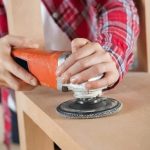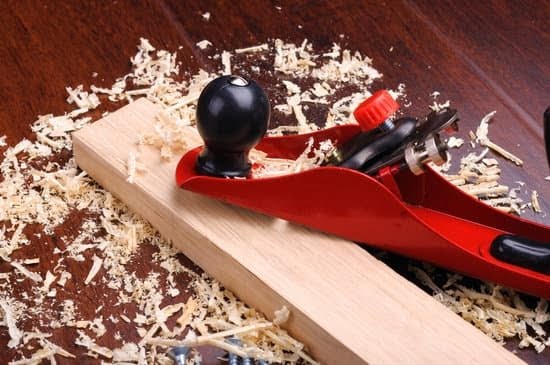Are you a woodworking enthusiast looking to improve your precision and accuracy in your projects? One of the fundamental skills in woodworking is measuring angles accurately. Whether you are building furniture, installing trim, or constructing cabinets, understanding how to measure angles is crucial for achieving professional results. In this article, we will explore the significance of measuring angles in woodworking and provide a comprehensive guide on the different tools and techniques used for this purpose.
Woodworking requires precise measurements and cutting angles to create seamless joints, attractive designs, and sturdy structures. The ability to measure and cut angles accurately can make all the difference between a successful project and a disappointing outcome. Understanding how to measure angles allows woodworkers to achieve symmetry, balance, and stability in their creations. This article will delve into the various types of measuring tools used in woodworking, as well as step-by-step guides on how to use them effectively.
In the following sections, we will discuss the different types of measuring tools commonly used in woodworking, including protractors, bevel gauges, and combination squares. We will also provide detailed instructions on how to use these tools to measure angles accurately.
Additionally, we will share valuable tips and tricks for achieving precision in angle measurements while highlighting common mistakes that should be avoided. By the end of this article, you will have a comprehensive understanding of the impact of angles on woodworking projects and the importance of precision in angle measurements for successful outcomes.
Types of Measuring Tools Used in Woodworking
Woodworking requires precision and accuracy, especially when it comes to measuring angles. There are several types of measuring tools that woodworkers use to ensure their angles are exact. The most common measuring tools used in woodworking include protractors, bevel gauges, and combination squares.
Protractors
Protractors are a versatile tool for measuring and drawing angles. They have a semicircular shape with marked degrees from 0 to 180 on the inside edge. To measure an angle using a protractor, place the center hole of the protractor over the vertex of the angle and align one of the edges with one side of the angle. Then, read the number where the other side crosses the scale on the protractor to determine the angle measurement.
Bevel Gauges
Bevel gauges are specifically designed for woodworking and are used to measure and transfer angles. They consist of a handle with a metal blade that can be adjusted to any angle. To use a bevel gauge, loosen the lock nut at the end of the blade and adjust it to match the desired angle. Once set, tighten the nut to secure the blade in place.
Combination Squares
Combination squares are multifunctional tools that can be used for various measurements in woodworking, including determining right angles and transferring angles. They consist of a ruler with a sliding head that can be locked at any position along the blade, allowing it to function as both a straightedge and a square.
Using these different types of measuring tools is essential in ensuring accurate angles in woodworking projects.
Understanding how do you measure angles in woodworking allows woodworkers to create precise cuts and joints, resulting in high-quality finished products that meet their design specifications.
Step-by-Step Guide on How to Use a Protractor to Measure Angles in Woodworking
Measuring angles is a critical skill in woodworking, as it directly affects the quality and precision of the final product. One of the most commonly used tools for measuring angles in woodworking is the protractor. This tool allows woodworkers to accurately measure and replicate angles for various cuts and joints. Here’s a step-by-step guide on how to use a protractor in woodworking:
Steps
- Choose the appropriate protractor: There are different types of protractors available, such as half-circle and full-circle protractors. Select the one that best suits your woodworking project.
- Align the base of the protractor: Place the base of the protractor flush against one edge of the wood where you want to measure the angle.
- Position the center point: The center point of the protractor should be aligned with the vertex or corner where the two edges meet.
- Read the measurement: Once properly aligned, read the measurement indicated by the edge or line on which your second piece intersects with, ensuring an accurate angle reading.
- Mark or cut accordingly: Use this measurement to mark or cut your wood at the desired angle, ensuring precision in your woodworking project.
Using a protractor may seem straightforward, but it requires attention to detail and accuracy. Practicing with scrap wood can help improve your skills in using this tool effectively for measuring angles in woodworking projects. By following these steps and paying attention to details, you can ensure that your angles are accurately measured for successful woodworking projects.
Step-by-Step Guide on How to Use a Bevel Gauge to Measure Angles in Woodworking
A bevel gauge is an essential tool in woodworking that allows for accurate measurement and transfer of angles. Here is a step-by-step guide on how to effectively use a bevel gauge to measure angles in woodworking:
1. Select the Angle: Decide on the angle you need to measure and make sure the workpiece is securely positioned for accuracy.
2. Adjust the Bevel Gauge: Loosen the locking mechanism on the bevel gauge and align the blade with the desired angle. Tighten the locking mechanism to secure the blade in place.
3. Place the Bevel Gauge: Position the bevel gauge against the edge of the workpiece, ensuring that it rests flush against both surfaces.
4. Read the Measurement: Take note of the angle indicated by the blade of the bevel gauge. Ensure that there are no gaps or spaces between the workpiece and the gauge for an accurate reading.
5. Transfer or Lock-in Angle: Once you have measured and confirmed the angle, you can then transfer it to another workpiece by adjusting their respective angles using your bevel gauge as reference.
6. Store Properly: After use, make sure to store your bevel gauge properly to prevent any damage that could affect its accuracy in future measurements.
By following these steps, woodworkers can effectively utilize a bevel gauge to measure accurately and transfer angles for their woodworking projects.
– Remember to recheck your measurements multiple times before making any cuts or adjustments.
– If possible, test your measurements on scrap wood first before applying them to your actual project.
– Keep your measuring tools clean and calibrated regularly for precise results every time.
Proper angle measurement is crucial in woodworking as it directly affects how pieces fit together and ultimately determines the overall quality of a project. Understanding how do you measure angles in woodworking is key for achieving precision and success in creating furniture, cabinets, and other wooden structures.
It’s important to avoid common mistakes such as inaccuracies due to positioning or misreading tool markings that can lead to faulty angles and compromised project integrity. By paying attention to detail when measuring angles, woodworkers can ensure that their projects are not only aesthetically pleasing but also structurally sound.
Tips and Tricks for Accurately Measuring Angles in Woodworking
Measuring angles in woodworking is crucial in ensuring the precision and accuracy of your projects. With proper measurement, you can achieve the perfect fit for joints, cuts, and designs. Here are some tips and tricks to help you accurately measure angles in woodworking.
Firstly, always use the right tools for the job. A protractor, bevel gauge, or combination square are essential for measuring angles in woodworking. These tools allow you to accurately determine the angle of a surface or create a beveled edge.
When using a protractor to measure angles in woodworking, place the base of the protractor flat against one side of the angle and align the center point with the vertex. Then, read the measurement where the other side of the angle crosses the protractor scale. This will give you an accurate reading of the angle.
Another method for measuring angles in woodworking is to use a bevel gauge. Simply adjust the bevel gauge to match the angle you want to measure and then lock it in place. You can then transfer this angle directly to your workpiece for precise cutting or shaping.
It’s important to remember that accuracy is key when measuring angles in woodworking. Even small discrepancies can result in ill-fitting joints or misaligned cuts. Taking your time to measure and double-checking your angles can save you from costly mistakes down the line.
| Tips for Measuring Angles | Useful Information |
|---|---|
| Use proper tools | A protractor, bevel gauge or combination square are essential for accurate measurements |
| Using a Protractor | Place base flat against one side, align center point with vertex, read measurement accurately |
| Utilizing Bevel Gauge | Adjust gauge to desired angle, lock it in place and transfer angle directly to workpiece |
Common Mistakes to Avoid When Measuring Angles in Woodworking
Measuring angles in woodworking is a crucial step in ensuring the accuracy and precision of your projects. However, there are common mistakes that novice woodworkers often make when measuring angles, which can result in flawed cuts and inaccurate joints. By being aware of these mistakes and learning how to avoid them, woodworkers can improve the quality of their work and achieve better results.
One common mistake to avoid when measuring angles in woodworking is relying solely on visual estimation. While it may be tempting to eyeball the angle and make a cut based on what looks right, this method is unreliable and can lead to inaccuracies. Instead, it’s important to use measuring tools such as protractors, bevel gauges, or combination squares to ensure precise angle measurements.
Another mistake to avoid is neglecting to check the calibration of your measuring tools. Over time, these tools can become misaligned or inaccurate, leading to incorrect angle measurements. It’s essential to regularly calibrate and check the accuracy of your measuring tools to maintain precision in your woodworking projects.
Additionally, failing to account for factors such as wood movement or material thickness can result in improperly measured angles. These variables can affect the final fit and assembly of your woodworking pieces, so it’s crucial to consider them when measuring angles for cuts or joinery. Making adjustments for these factors will help ensure that your angles are measured correctly and that your projects come together seamlessly.
| Common Mistakes When Measuring Angles | How to Avoid Them |
|---|---|
| Relying on visual estimation | Use measuring tools for precise measurements |
| Neglecting tool calibration | Regularly calibrate and check accuracy of measuring tools |
| Failing to account for wood movement or material thickness | Adjust measurements for these variables |
Understanding the Impact of Angles on Woodworking Projects
Woodworking is a craft that requires precision and accuracy, especially when it comes to measuring angles. The slightest miscalculation can lead to misaligned joints, uneven edges, and ultimately, a flawed final product. Understanding the impact of angles on woodworking projects is crucial for achieving high-quality results.
Importance of Accurate Angle Measurements
Accurate angle measurements are essential in woodworking as they ensure that pieces fit together seamlessly and create strong, stable joints. Whether you are working on furniture, cabinetry, or decorative items, the angles at which wood pieces are cut and joined directly impact the overall quality and functionality of the final product. Without precise angle measurements, the structural integrity of the project may be compromised.
How to Measure Angles in Woodworking
There are several types of tools commonly used for measuring angles in woodworking, including protractors, bevel gauges, and combination squares. Each tool has its own method of use and advantages depending on the specific needs of a project.
For example, protractors are great for measuring and marking angles on flat surfaces while bevel gauges are ideal for transferring an angle from one piece to another. Understanding how to use these tools effectively is key in achieving accurate angle measurements in woodworking projects.
Impact on Final Product
The impact of accurate angle measurements can be seen throughout all aspects of a finished woodworking project. From visually pleasing joints to sturdy construction, precise angles contribute to the overall success and longevity of the piece. Properly measured angles also allow for smoother assembly processes and provide a professional finish that reflects craftsmanship and attention to detail.
Conclusion
In conclusion, precision in angle measurements is crucial for successful woodworking projects. Whether you are working on a simple DIY project or a more complex woodworking endeavor, getting the angles right can make a significant difference in the final outcome of your work. As discussed, there are various measuring tools available for woodworkers, such as protractors, bevel gauges, and combination squares, each serving a specific purpose in ensuring accurate angle measurements.
The step-by-step guides provided on how to use a protractor and bevel gauge offer valuable insights into the practical application of these tools. Additionally, the tips and tricks shared can help woodworkers achieve greater accuracy when measuring angles, ultimately leading to better results in their projects.
Understanding the impact of angles on woodworking projects is essential for any woodworker. It affects not only the overall aesthetics of the piece but also its structural integrity. Therefore, taking the time to measure angles accurately and avoiding common mistakes can save time and materials while producing high-quality results. By recognizing the importance of precision in angle measurements, woodworkers can elevate their craftsmanship and create professional-grade pieces.
Frequently Asked Questions
How Do You Measure an Angle Correctly?
Measuring an angle correctly involves using a protractor or an angle measuring tool to align with the two lines that form the angle. The measurement is then read from the tool to determine the size of the angle in degrees.
How Do You Figure Out an Angle?
Figuring out an angle can be done by identifying the two lines that form the angle and using a protractor or an angle measuring tool to measure the degree of rotation between the two lines. This measurement will indicate the size of the angle.
How Do You Mark and Cut Angles in Wood?
Marking and cutting angles in wood requires careful measurement and marking first. Using a protractor or an angle measuring tool, mark the desired angle on the wood surface. Then, use a miter saw or a similar cutting tool to carefully cut along the marked line, ensuring precision and accuracy in achieving the desired angled cut in the wood.

Hi everyone! I’m a woodworker and blogger, and this is my woodworking blog. In my blog, I share tips and tricks for woodworkers of all skill levels, as well as project ideas that you can try yourself.





